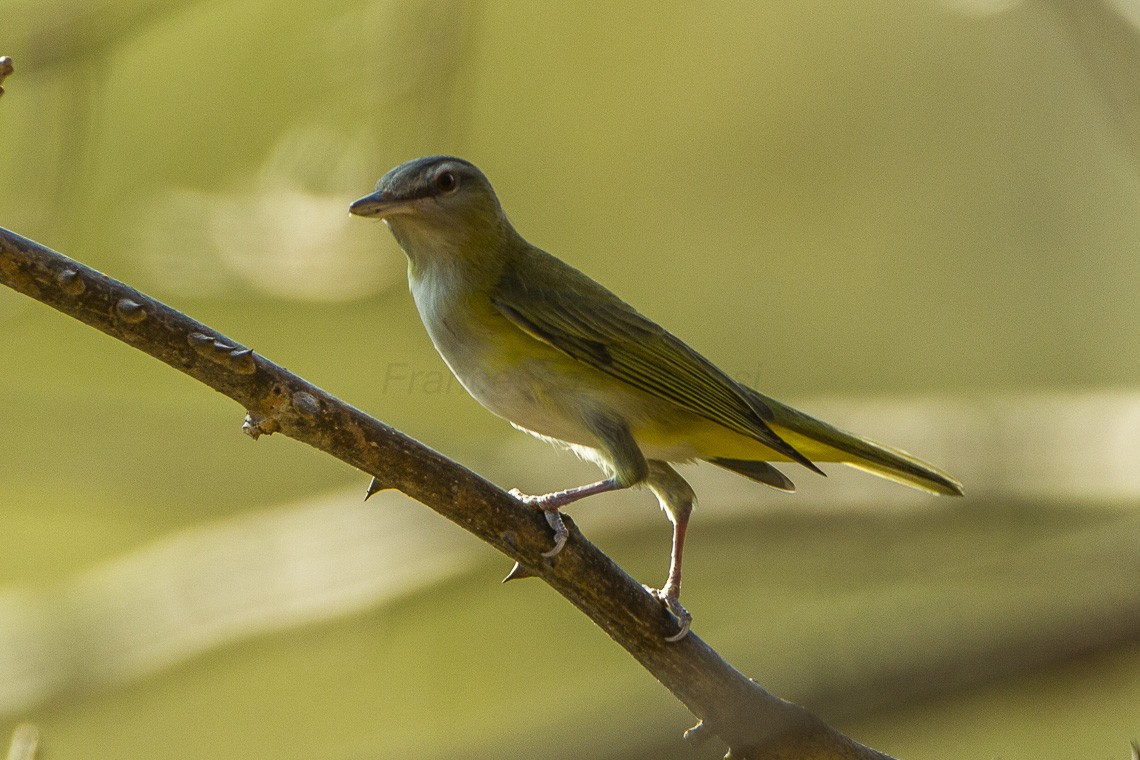Yellow-green Vireo
A species of Vireos Scientific name : Vireo flavoviridis Genus : Vireos
Yellow-green Vireo, A species of Vireos
Botanical name: Vireo flavoviridis
Genus: Vireos
Content
Description General Info
 Photo By Francesco Veronesi , used under CC-BY-SA-2.0 /Cropped and compressed from original
Photo By Francesco Veronesi , used under CC-BY-SA-2.0 /Cropped and compressed from original Description
The adult yellow-green vireo is 14–14.7 cm in length and weighs 18.5 g. It has olive-green upperparts and a dusky-edged gray crown. There is a dark line from the bill to the red-brown eyes, and a white supercilium. The underparts are white with yellow breast sides and flanks. Young birds are duller with brown eyes, a brown tint to the back, and less yellow on the underparts. The adult yellow-green vireo differs from the red-eyed vireo in its much yellower underparts, lack of a black border to the duller gray crown, yellower upperparts and different eye color. Some individuals are difficult to separate, even in the hand, from the similar red-eyed vireo, with which it is sometimes considered conspecific. Its exact status as a passage bird in countries such as Venezuela is therefore uncertain. The yellow-green vireo has a nasal nyaaah call, and the song is a repetitive veree veer viree, fee’er vireo viree, shorter and faster than that of the red-eyed vireo. This species rarely sings on its wintering grounds. 
Size
15-18 cm (6-7 in)
Life Expectancy
10 years
Nest Placement
Tree
Feeding Habits
Yellow-green Vireo predominantly feasts on insects, caterpillars, beetles, and supplements its diet with small fruits and mistletoe berries. Its foraging method includes gleaning from foliage. Noteworthy is its preference for mistletoe berries, indicating a unique dietary adaptation.
Habitat
Yellow-green Vireo typically inhabits open or semi-open landscapes characterized by a mix of scattered trees and understory vegetation. These birds thrive in areas like forest edges, riparian woodlands adjacent to bodies of water, and cultivated plantations, often avoiding large expanses of dense, unbroken forest. Their preferred elevation range extends from sea level up to 1500 meters. Broadly, yellow-green Vireo's habitat spans various tropical and subtropical regions, where they are often associated with resaca woodlands and shade trees.
Nest Behavior
The female single-handedly builds the nest. Yellow-green Vireo's egg-laying and incubation patterns are less documented, but males vigorously defend territories with song, and females alone manage nest construction and likely egg and chick care.
Nest Characteristics
Yellow-green Vireo construct nests 5-40' high in trees or shrubs, utilizing a forked twig for the base. The open cup is crafted from grass blades, plant fibers, cobwebs, and bark strips, adorned externally with spiderwebs and lined with fine plant fibers.
Dite type
Insectivorous
General Info
Feeding Habits
Bird food type
Bird Feeder Type

Small Hopper

Small Tube Feeder
Sounds
Song
Recording location: Costa Rica
Song
Recording location: Mexico
Distribution Area
It breeds from southern Texas (occasionally the Rio Grande Valley) in the United States and the western and eastern mountain ranges of northern Mexico (the Sierra Madre Occidental and Sierra Madre Oriental—also the Cordillera Neovolcanica) south to central Panama. It is migratory, wintering in the northern and eastern Andes and the western Amazon Basin. This vireo occurs in the canopy and middle levels of light woodland, the edges of forest, and gardens at altitudes from sea level to 1500 m. 
Species Status
Not globally threatened.
Scientific Classification
Phylum
Chordates Class
Birds Order
Perching birds Family
Vireos Genus
Vireos Species
Yellow-green Vireo